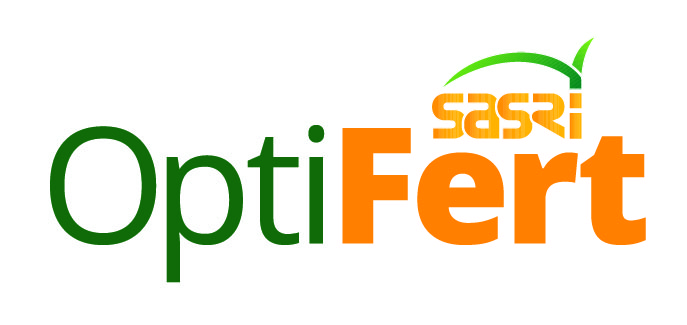Enter the NPK requirement, in kg/ha from your lab report. Use whole numbers only.
Where a user intends splitting fertiliser applications, then the nutrition requirement must be split accordingly and the calculator must be run separately for each intended split.
If other organic or mill byproducts/waste amendments are to be applied, it is important that, prior to using this calculator, the N, P K requirement values are reduced by the amounts these amendments are expected to supply.
As it is can be difficult to find an exact fitting combination of fertilisers (especially with blends), it is necessary to allow the optimisation procedure to find combinations that might not be exact but are a close fit but that still fall within an acceptable range of the target requirement.
Acceptable range settings allow the user to specify the upper and lower limits for the acceptable range of NPK supplied (i.e. how much above and below the initially specified NPK the user is prepared to accept.)
Two non-adjustable default range options are provided (Plant and Ratoon) and one user-adjustable range option (Custom).
Default range settings were selected to be moderately conservative and aim to provide a compromise between over- or under-supplying a nutrient, without serious risk of yield loss. The default upper and lower range settings are given as a fixed amounts above or below the user specified NPK requirement.
Plant crop
Nitrogen: Lower: -15 kg/ha Upper: +10 kg/ha
Phosphorus: Lower: -5kg/ha Upper: +10 kg/ha
Potassium: Lower: -15 kg/ha Upper: +20 kg/ha
Ratoon crop
Nitrogen: Lower: -10 kg/ha Upper: +10 kg/ha
Phosphorus: Lower: -5kg/ha Upper: +5 kg/ha
Potassium: Lower: -10 kg/ha Upper: +20 kg/ha
For example: If your NPK requirement is 100N, 20P and 140K and your select a plant crop, the optimisation procedure will consider N values between 85 - 110 kg/ha, P between 15 - 30 kg/ha and K between 125 - 160 kg/ha.
The Custom input option is an advanced user option. This allows you to specify your own acceptable NPK range (upper and lower amounts of fertiliser allowed) that will be used in the calculations. The values must be input as whole numbers. These will override the default values used in the plant or ratoon crop options.
Note: Lower values must be less than initially entered NPK requirement, and upper values must be higher. Also, selecting the same value for the upper and lower limit as the initially entered target will force OptiFert to seek a best fit (exact matching to requirement) option for fertiliser. Depending on fertiliser choices, a solution may not be found.
To revert to the default plant or ratoon options, select either the Plant or Ratoon option buttons.
Select the fertilisers you would like to consider in the optimisation procedure. The standard list contains 40 common straights and blends, while the Custom option allows you to enter your own fertiliser if not available on the standard list.
To select a standard fertiliser, click on Add Standard Straights and Blends and tick the desired fertilisers from the scroll list, then press “OK”.
If you wish to add a custom fertiliser select the Add Custom Blend and enter the name of your fertiliser, The N:P:K ratio and % nutrient content into the relevant option boxes, then press OK. Up to five (5) custom fertilisers can be added.
The selected fertilisers will appear in a list where fertilisers can be removed or edited for different scenarios. A minimum of one (1) and maximum of six (6) fertilisers from the combined standard and custom list can be selected each time.
For each fertiliser, add the cost of that fertiliser. Ensure the cost provided corresponds to the unit of cost selected and that all fertilisers are input using the same unit.
Three cost unit options are permitted, namely R/kg, R/50kg (or bag) and R/ton of fertiliser. Use only whole numbers (no decimal points permitted). All fertilisers selected must have a cost.
Maximum number of fertilisers to use
Most growers will look for best fit solutions with the fewest fertiliser types possible. This may be feasible where the requirement is a single element; or where the ratio of nutrients closely matches a commercially available blend or falls within the acceptable upper and lower tolerances specified.
However, in most cases, two or more fertilisers may be needed to match the requirements. OptiFert allows the user to evaluate different scenarios by changing the maximum number of fertilisers used in the optimisation procedure. A user can select 1, 2 or 3 as the maximum number of fertilisers to be used in a scenario.
Where the maximum is set at 1, each fertiliser in the chosen list will be tested for optimal fit to requirement (within the specified upper and lower requirement limits). Where 2 or 3 fertilisers are selected, OptiFert will seek a best fit with the specific number of fertiliser or fewer (e.g. if you select 3, lowest cost solutions may be 1, 2 or 3 fertiliser combinations).
Number of solutions to display
In many cases, several different combinations of fertilisers can provide solutions that are very similar in overall cost. This option allows the user to limit the results to up to five best solutions. Where fewer solutions than selected are found, only those are displayed.
The Calculate button runs the optimisation procedure using the parameters selected, and then displays solutions on the Results tab.
Lab report recommendation
N:
P:
K:
| Fertiliser type |
Amount kg/ha |
Nutrients supplied (kg/ha) |
Surplus or deficit (kg/ha) | Cost (R/ha) |
||||||
|---|---|---|---|---|---|---|---|---|---|---|
|
|
|||||||||
|
|
|
|||||||||
| ㅤ |
|
|
